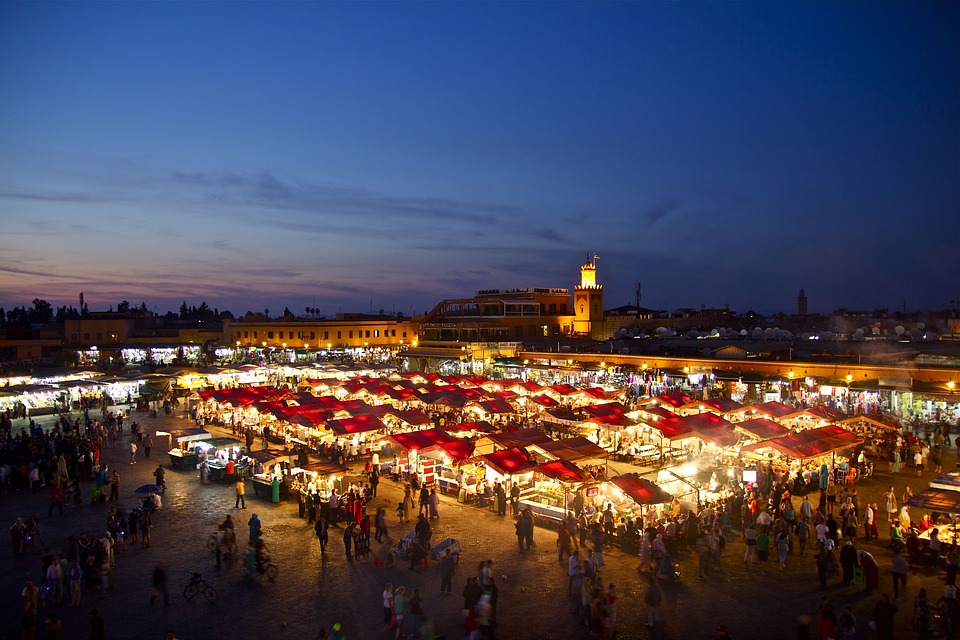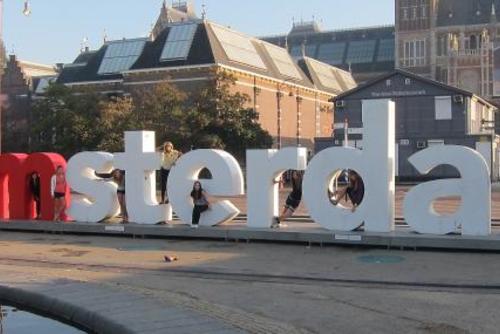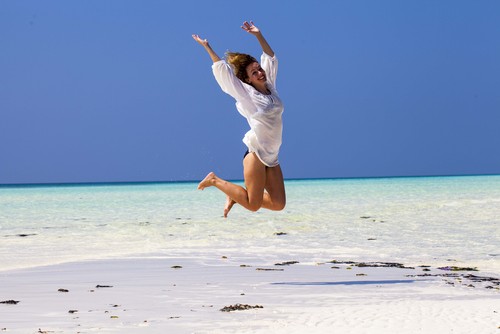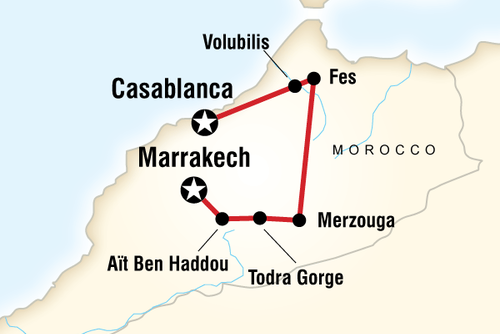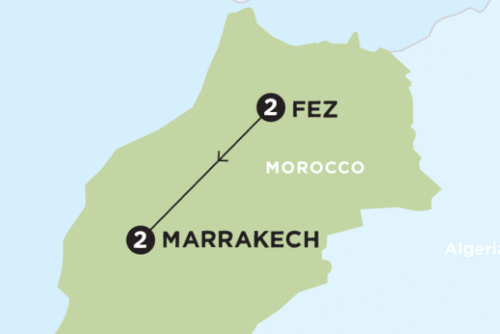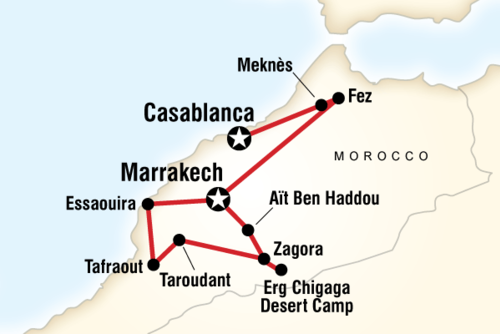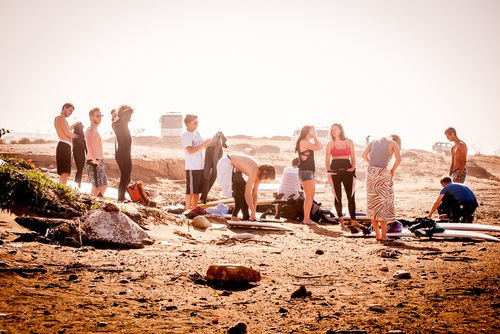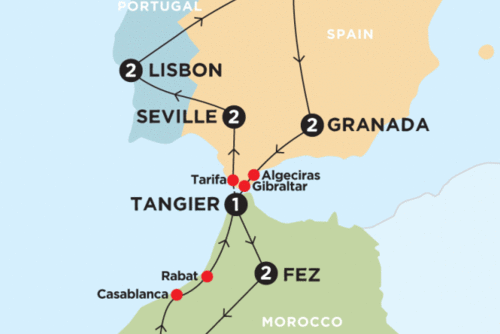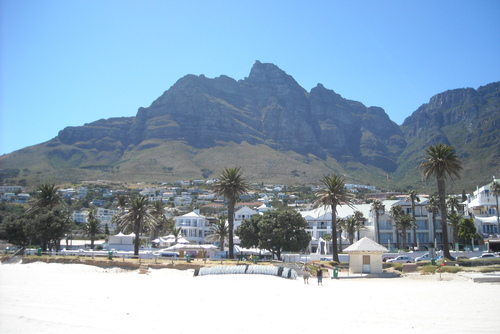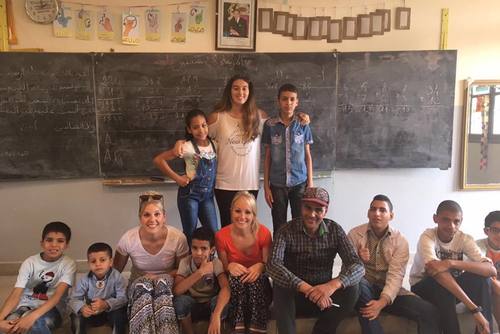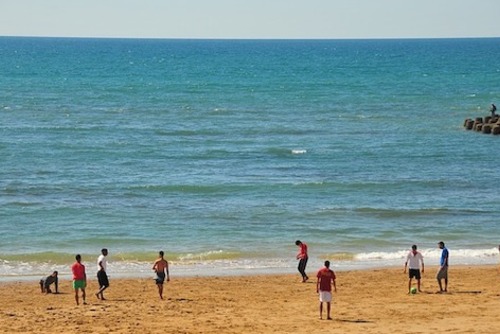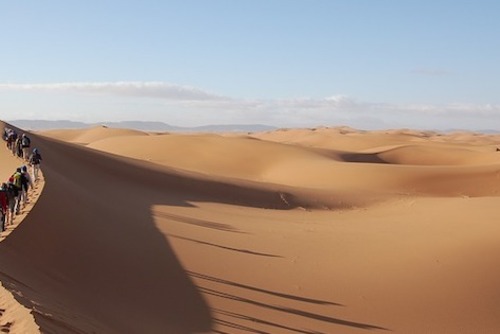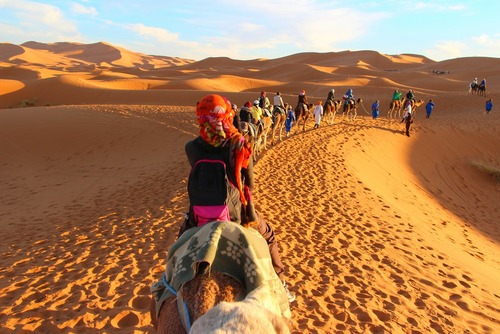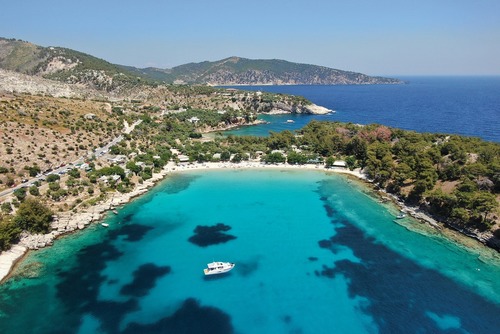Marrakesh is just the right balance between not too far from home but also a completely new experience brimming with culture.
Each year, around 14,000,000 tourists travel to Morocco, and most visits are trouble free. However, because the majority of Moroccans are strictly Muslim, it is extremely important that when visiting the country you should show awareness and respect for their culture and therefore do not act offensively.
Whilst there are plenty of reasons to hop on a plane to Marrakesh ASAP, there are also a few things to be aware of before jetting off.
So, here’s some top advice from our featured article writers Bethany Richards & Gemma Teal which will be helpful if you are planning to explore this facsinating city for the first time!
1. Visit the Djemaa El Fna
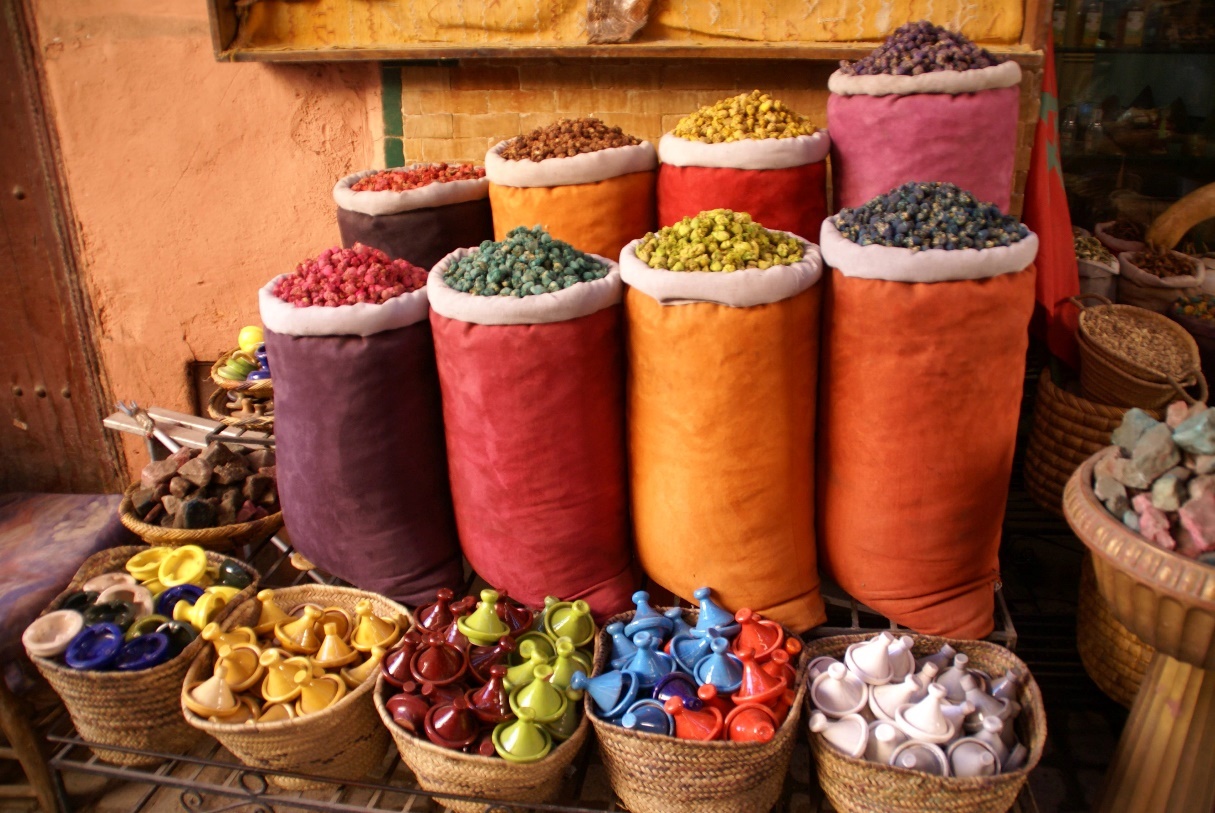
Marrakesh is one of the most popular cities to visit in Africa and there are so many things to do.
The Djemaa El Fna is often described as the heart of the city, and it certainly lives up to the hype. The square is constantly buzzing with exciting noises and smells that you may not be used to – in a good way.
Wandering through the maze of souks could easily fill up a whole day’s worth of entertainment as it’s incredibly easy to have a wander and admire it all.
However, if you’re looking for a bit of a break from the hustle and bustle of the markets then go to Place des Espices (Spices Square).
The Spices Square is by far the calmest and most atmospheric place in the Djemaa El Fna, not to mention absolutely beautiful. The lantern stalls are also worth an honourable mention; the perfect place to go to feel the Moroccan magic and possibly get an Insta-worthy travel snap.
2. What to Wear
We chose to visit the markets during the late evening because we had heard from other people staying in the hotel who had been throughout the day, that the heat was just too unbearable, particularly because it was the height of summer!
The Muslim culture expects all women to cover up their legs and shoulders and men just the legs, therefore I would advise that when you are packing for your trip you take this into consideration and choose an outfit that would be suitable to wear outside of the hotel.
Trust me, if you do not abide by this advice then you will be constantly frowned upon by the local people and it will start to frame UK tourists in a very poor light.
A maxi dress/skirt is always a good choice for women, paired with a lightweight t-shirt, as not only are these appropriate for the culture, but they are much cooler to wear in the warm and muggy evenings!
Another important thing to mention is to either wear your bag on the front of you or buy a bum-bag that you can strap round your midriff to ensure that your valuables are always safe and in sight.
There are lots of pick-pocketers lurking around and if you are seen to be wearing your bag freely hanging off your back, then you will unfortunately become their next target.
3. Take Sunglasses
This tip seems pretty self-explanatory but there’s more to it than you think. Whilst they are important to protect yourself from the North African sun, sunglasses also serve a special purpose in the markets.
When strolling through the Djemaa El Fna you will be approached by shopkeepers who will try and sell you their products with perseverance.
The main way they pull you in is through making eye contact with you, so by wearing sunglasses it is much easier to walk past them without being harassed.
Although this may be daunting at first, it is important to remember that this is very much part of Moroccan culture and is something to be embraced.
4. Culture & How to Act
When getting out of your taxi and walking to the huge array of markets ahead, you will be immediately approached by young children innocently pleading for money. They will gaze up at you with their big brown eyes, making you feel extremely sad.
However, the best solution that I can suggest is that you do not provide them with any cash as you don’t know where it will end up going, rather you should bring something useful to give to them like some colouring crayons or some lollipops. This won’t be the only harassment you will experience, as the market is full of traders trying to get you to buy something from every shop!
When walking through the hundreds of markets, all selling beautiful and authentic Moroccan antiques, I would advise not to stop and show interest in everything that you see and like, as from my own experience, you will be followed by the same shopkeeper for a good ten minutes, as you walk around the market!
However, when you do want to buy something, you will need to attempt to haggle down the price for an item as often the shopkeeper will start off with a price way too high for what you would expect to pay. This can be a bit of a challenge, as they do tend to say no at first, but if you keep gently pushing them towards a lower price, then they will eventually agree!
Before arriving you might want to learn some useful words and phrases for visiting Morocco, this will help with interactions and impress the local people.
5. Where to Go for Food?
After shopping, you may want to go and find a bite to eat in one of the restaurants in the square.
We initially went to one of the main bars right in the centre, which had an amazing view of the whole of the market lit up at night, yet when we sat down at a table we waited an extremely long time to gain any service and noticed that the menus were extremely dirty and so we felt that we did not want to stay there for food.
However, when we walked back into the square, there was a young man standing around offering us to come into his restaurant. At the time my dad really fancied a beer and asked if they served any alcohol, as so many other restaurants weren’t doing so, due to it being Ramadan.
To my dad’s surprise, the man said yes and guided us towards the restaurant, out of the square, down some darker streets off the beaten track. My dad seemed slightly sceptical to keep following at first, as the route that we were being taken on seemed pretty dodgy and there was far fewer tourists around in the area than where we were before.
Nonetheless, we did eventually arrive at the restaurant which looked like a house, fronted by a large black door, and when we went inside we were simply taken aback by how beautiful it was.
The tables were laid out on the top floor, looking down through the spiral staircase in the centre to the whole restaurant below. The décor was truly authentic; the walls were covered in intricate Moroccan patterns and the table seating consisted of pillows laid out on some funky, striped rugs.
We ate the most delicious tagine and luckily my dad could refresh his palate with a nice cold beer! It was definitely worth following the man to find somewhere more special and unique, as overall, we had a much more traditional experience, better service and great entertainment – there were belly dancers all around the restaurant!
If you do visit the markets, I would strongly suggest doing the same, however it would be a lot safer to go in a group because you would be more vulnerable walking down the darker areas on your own or as a couple.
6. Be Firm But Polite
In addition to wearing sunglasses, another tip for the markets is to be firm but polite. If you have been approached by a shopkeeper, a simple ‘no, thank you/non, merci’ is enough to ward them off and allow you to carry on with your day.
The shopkeepers will appreciate you being firm but fair rather than saying nothing at all. It might feel as if you are being rude at first, but it is just part of the Moroccan market culture.
7. Have an Open Mind
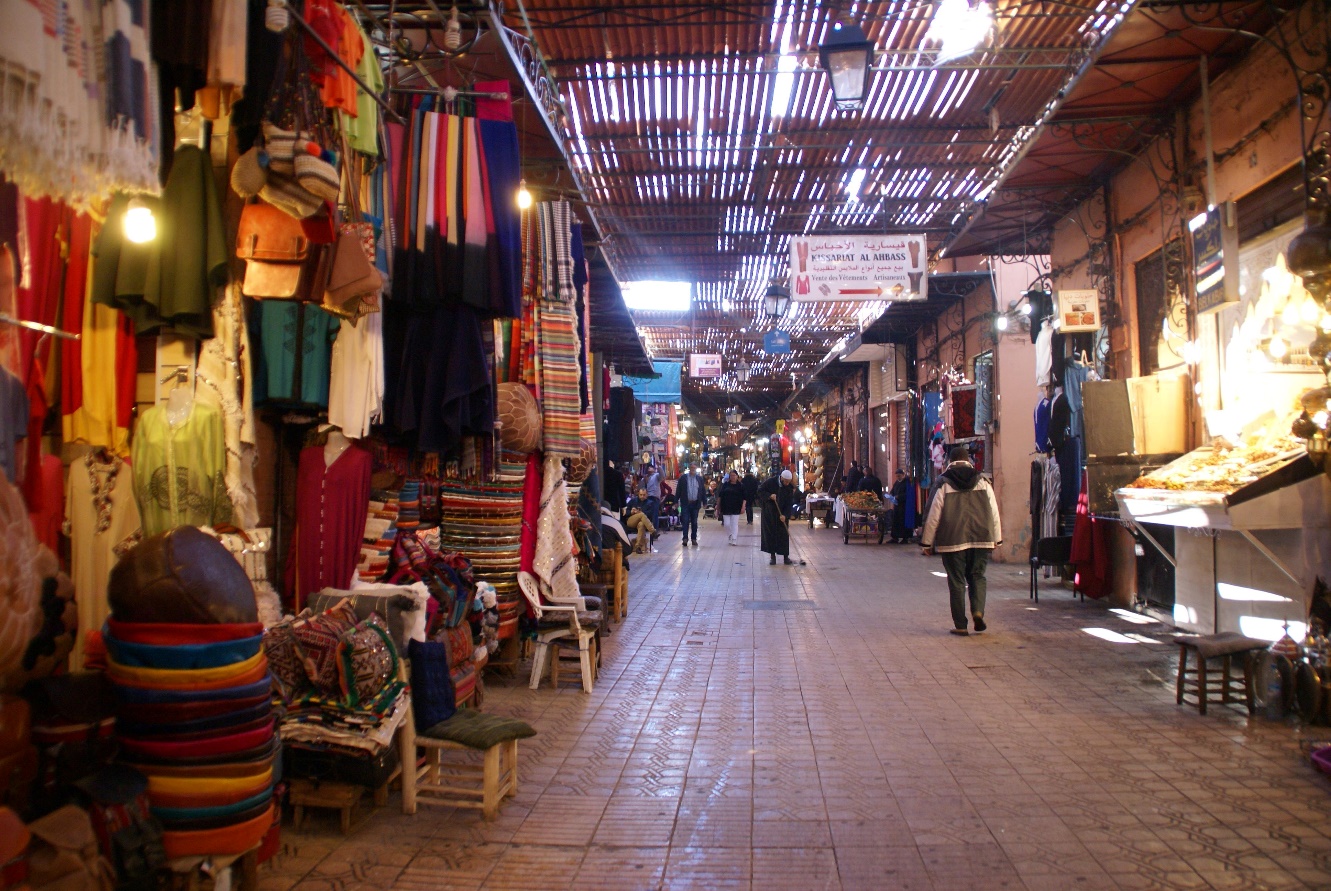
As aforementioned, Marrakesh is full of cultural experiences that might be entirely different to what you’re used to. For example, some souks might casually have snakes and monkeys which is very normal to them but quite abnormal for us. Embrace it!
It’s also worth mentioning that some of the meat stalls let you pick your chicken and kill it in front of you, so it’s not for the fainthearted (or the vegetarian!)
8. Be Aware of Scams
As with most places, there is a risk of being taken advantage of as a tourist, so it is very important to stay aware of your surroundings.
Whilst the markets are extremely pretty, be careful when taking photos of them as some shopkeepers might try and charge you for it. It may also seem like people in the markets are eager to help you with directions, take your luggage and may even suggest that you have ‘dropped something’ – don’t fall for it, it might be their way of getting money off you.
Henna is beautiful and a really lovely souvenir to get from your trip, however beware of getting black henna from the main square as it is harmful to your skin. It’s worth paying to have it done properly in the Henna Art Café on Derb Sqaya – it’s brown, safe on your skin and lasts far longer.
9. Be Respectful
Lastly, Morocco is a Muslim country and so you’ll be expected to respect their local laws and customs. Most importantly, it is always safest to cover up, especially your shoulders and ankles.
Wearing a strappy vest top and short shorts will make you stand out in the worst way possible. Yes, it’s hot and humid but respect is incredibly important. Also, learning at least a little bit of the local language is always a good idea!
10. Consider Tours
Lots of international travel operators and Morocco tour operators offer city sightseeing tours of Marrakesh. These are a great way to discover the highlights of the city, learn more about the places you visit and also have a fun experience visiting local highly rated restaurants.
Plan a Cultural Trip to Morocco
Whether you are looking for a cultural break, a gap year in Morocco or a backpacking adventure there are so many reasons to visit this north African gem of a country.
Morocco is an extraordinary country in every sense of the word, so even though there are precautions to take before and during your travels, don’t be put off by all the warnings and experience the culture for yourself!
If you are interested in booking a trip? The following pages will give you ideas for things to do:
By Bethany Richards & Gemma Teal

